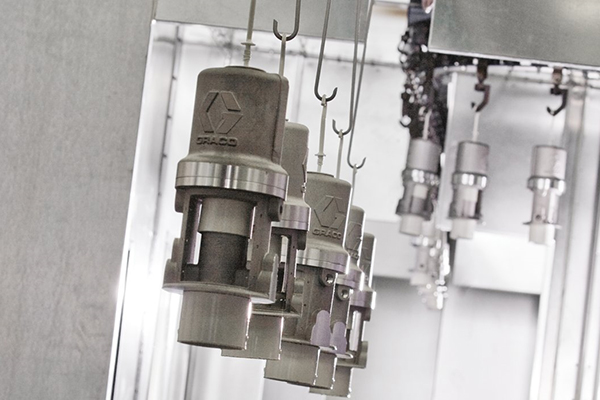5 Most Common Paint Mixing Room Challenges (and How to Tackle Them)
A paint mixing room is an indispensable asset for any paint line. However, operating it can be challenging at times. To get the most out of your paint mixing room, you must know how to tackle the most common challenges.
Are you storing and mixing paint for finishing operations? Then you’ll probably know that, along with the advantages, a traditional paint mixing room brings some important challenges – ranging from operator safety to efficiency. We briefly discuss the 5 most common and explain how to tackle them.
Traditional paint mixing room challenges
- It relies too much on humans
A traditional paint mixing room requires a lot of manual labour: checking paint levels, adding new paint, monitoring and controlling tank and fluid parameters, changing settings, etc. All these human interactions make it less efficient and also more dangerous. The less operators have to enter hazardous, loud and dirty areas, the better.
- It’s difficult to keep up and running
All workshop owners and production managers worry about the same issue: productivity. They want to avoid downtime as much as possible because it has a negative effect on the results. Certainly in the case of paint lines, that often requires flushing and maintenance, keeping them up and running is a big challenge.
- It’s expensive to maintain
Manual work and paint line downtime are the most important drivers of costs when working with a traditional paint mixing room. Not surprisingly every paint line owner is always looking for a way to keeping production and maintenance costs as low as possible.
- It offers limited control and monitoring
The best way to avoid paint line downtime and to assure the best finishing quality is by meticulously monitoring paint circulation and controlling fluid pressure and flow rates. Traditional paint mix rooms however offer limited control and monitoring. This makes it hard to keep the pressure and flow stable and in balance, which is vital to reduce paint shear and ensure optimal paint feed to the applicators.
- It’s not Industry 4.0 ready
Industry 4.0 is becoming the new standard in modern factories and production environments. In a so-called smart factory, machines are digitally connected and monitored in order to gain important insights in the key processes and to optimise overall production performance and efficiency. Traditional paint mix rooms are not ready for Industry 4.0, making them the Achilles heel of any smart production facility.
How to tackle these challenges: An Intelligent Paint Kitchen
The easiest way to tackle these challenges is Graco’s Intelligent Paint Kitchen. It’s a smart set of sensors, actuators, and control modules that communicate with each other and allow you to control and monitor pressure, flow rates, tank levels and agitator speeds from outside the hazardous area.
Graco’s Intelligent Paint Kitchen provides many advantages compared to traditional paint mixing rooms:
- Maintenance and human intervention are kept to an absolute minimum
- Advanced pump and tank control reduces the risk of unexpected downtime
- There is no need for expensive PLC programming, reducing costs drastically
- All the tasks and functions can be remotely controlled, via the HMI touchscreen
- All data is stored, allowing you to analyse and trace the complete finishing process
- The system is ready for Industry 4.0 and is equipped with the technology for IoT
Related Articles
How to make your paint room Industry 4.0 ready
Make your paint mixing room Industry 4.0 ready by adding advanced control and interconnectivity.
How to improve operator safety in the paint mixing room
Improving operator safety in the paint mixing room is key for any paint line owner.
Take control of your Paint Mix Room
The Intelligent Paint Kitchen is a smart set of sensors, actuators, and control modules that communicate with each other to optimize the performance of your paint supply and paint circulation system.





